Artist keeps a 'living fossil' alive

Lin Yuqin gives guidance to one of her students at the workshop.
When it comes to traditional craftsmen and women, many would relate to calloused, rough hands and a weather-beaten face. That, however, doesn’t match Lin Yuqin, who has been involved in water-based woodblock printing on rice paper at Duoyunxuan art center for 46 years.
Even today, Lin’s delicate facial features can still reveal her once stunning beauty.
“Oh, I am greatly flattered,” she says with a smile after being praised for her looks. “But it might be true that when I was young, I was selected because the studio was often visited by foreign guests at that time.”
The birth of the ancient craft dates back to the Tang Dynasty (AD 618-907); it flourished in the Ming Dynasty (1368-1644).
Today, water-based woodblock printing on rice paper is a “living fossil” of China’s printing history ─ it is on the nation’s list of intangible cultural heritage. The art is so demanding of perfection and patience that sometimes years are spent on just one work.
Only two studios in Shanghai and Beijing still practice this age-old craft.
The small Shanghai workshop on Yan’an Road W. was established by Duoyunxuan, an art house dating back to 1900, to preserve the art that involves many steps and separate pieces of carving that eventually all fit together.
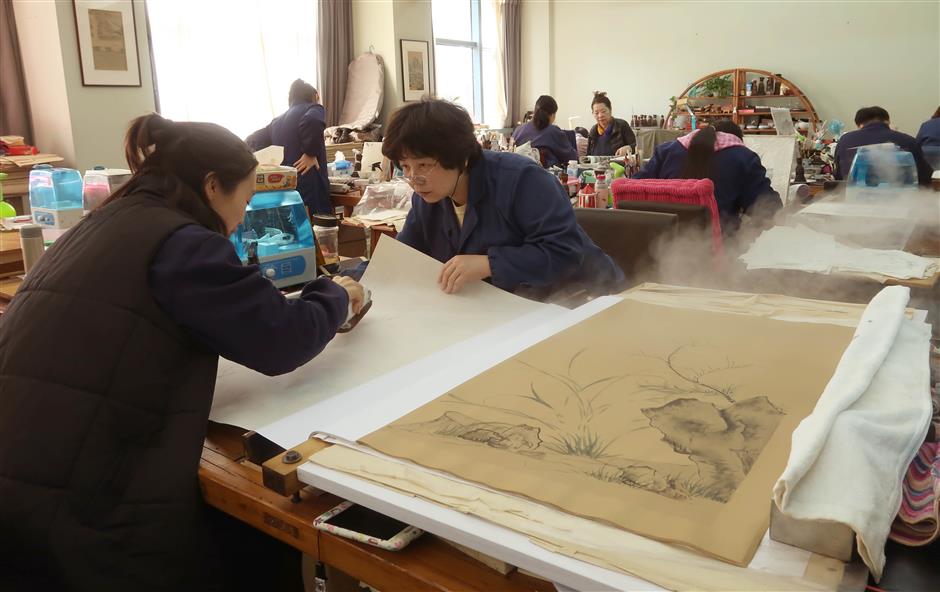
At the small workshop set up by Duoyunxuan, craftsmen and women are grouped in different teams responsible for outlining, carving and printing with water-based print.
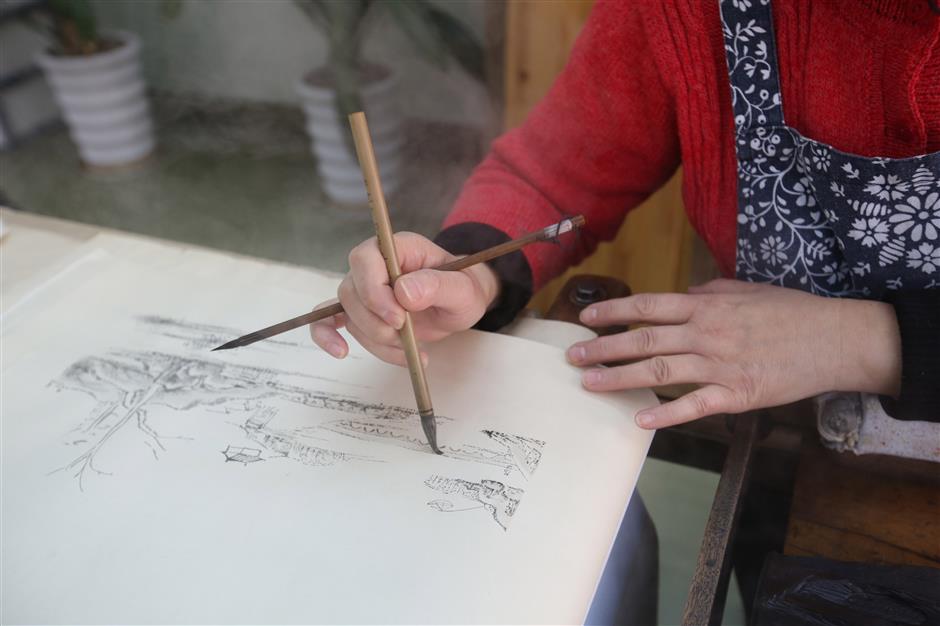
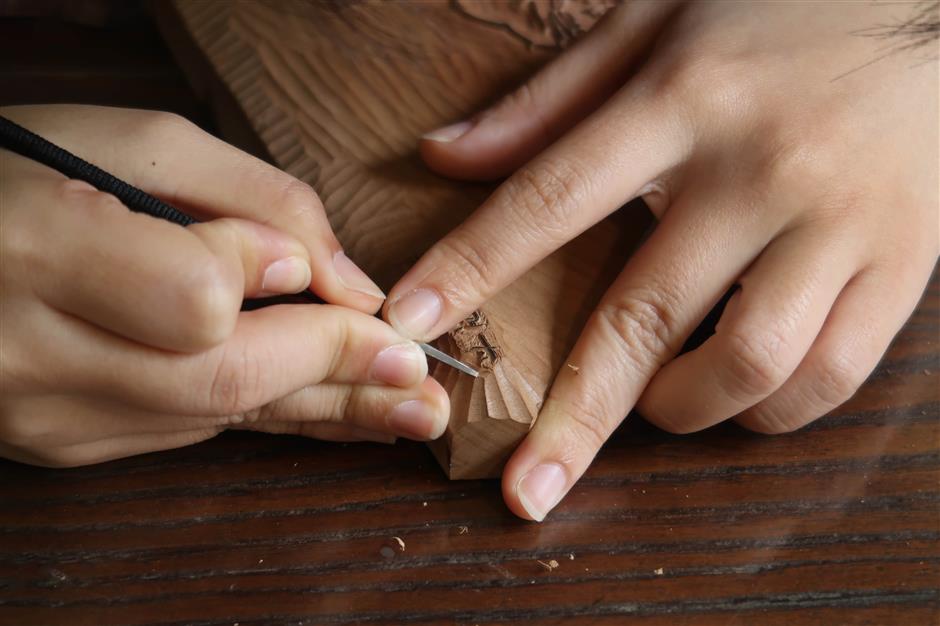
“It is difficult to explain the whole process and techniques,” Lin says. “Basically, there are three steps: outlining, carving and printing with water-based paint.”
Lin is an expert in the last step. She says the wood is carefully selected. Soft wood is used for detailed carving that looks like brushstrokes, and harder wood is used for strong and deep lines.
It might sound easy, but for those who are engaged in the art, they have to use their brains at every small step, akin to deciphering a puzzle.
Born in 1954 in Shanghai, Lin was assigned to the studio when she was just 18 years old. Before that, she had no idea of ink-wash painting or wood-block printing.
“But at that time we were fortunate to have some senior teachers coming from Beijing to tutor us,” she recalls. “They even taught us how to make our own tools, such as the brush made in mane with special size that can’t be found elsewhere.”
The visual effect of the final work can’t be achieved by any modern printing techniques and equipment, she says. Sometimes the magic created through pure handwork is beyond one’s expectations.
“Each step involves a lot of detailed and laborious work, and a whole print requires different woodblocks,” she says. “A single piece of rice paper is pressed successively on woodblocks bearing different colors.”
Although Lin retired years ago, she was invited by Duoyunxuan to pass the unique technique to the younger generation at the studio.
“Frankly I like the working atmosphere here very much,” she says. “Everything is quiet here despite the outside hustle and bustle.”
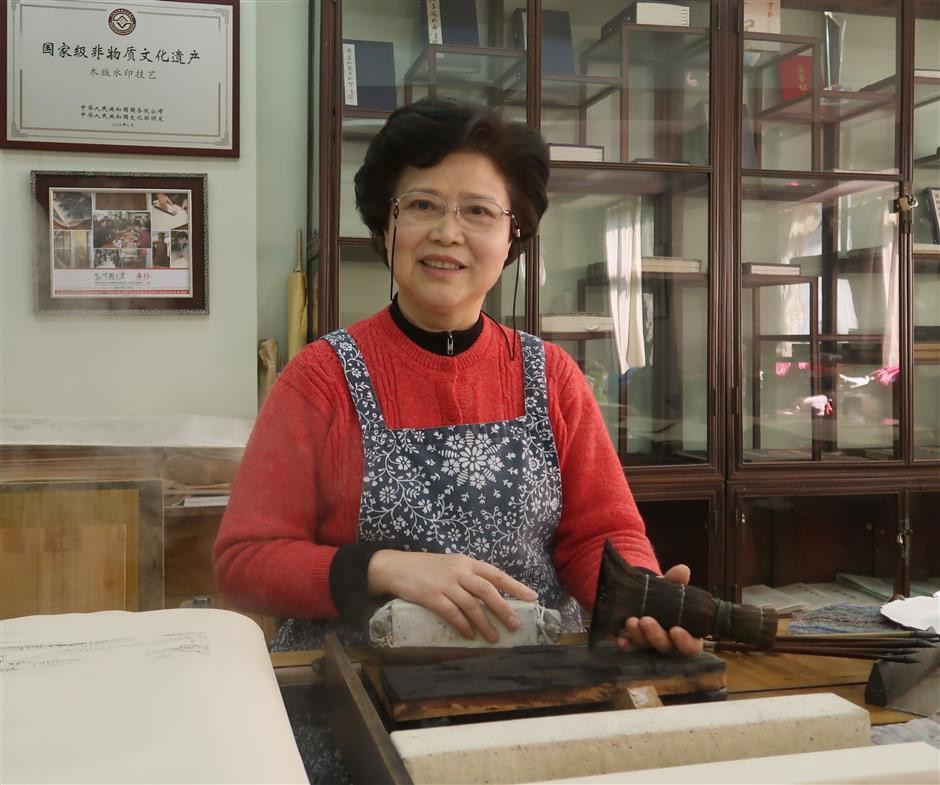
Lin Yuqin has devoted over four decades to the ancient craft of water-based woodblock printing on rice paper.
Q: Do you still remember the first time you came to the studio?
A: Sure, yes. You know, humidity is extremely important to ensure consistency of paint and application on rice paper. Now you can find several humidifiers installed beside each work. But back then there was no humidifier. The room was filled with mist from big pots of boiling water!
Q: Have you ever thought of giving up during the long process?
A: Frankly, I did. In the 1980s, a friend in a publishing house offered me a job, because the salary here at the studio was comparatively low. Everyone is practical, and me no exception. When I expressed my intention to the studio head, he tried hard to persuade me to stay and raised my salary as much as he could, though only a small portion. Finally, I realized that this was the kind of job I loved, so I remained here.
Q: Among all the art renderings, which one is the most impressive?
A: It is a 720cm-by-206cm scroll based on the painting “Saints Celebrating Their Birth,” a masterpiece by Ren Bonian (1840-96). The scroll required more than 2,000 woodblocks and was showcased at the World Expo Shanghai in 2010.
Guess how long it took? Eight years. That’s really consummate craftsmanship. I feel proud that I was part of the team.
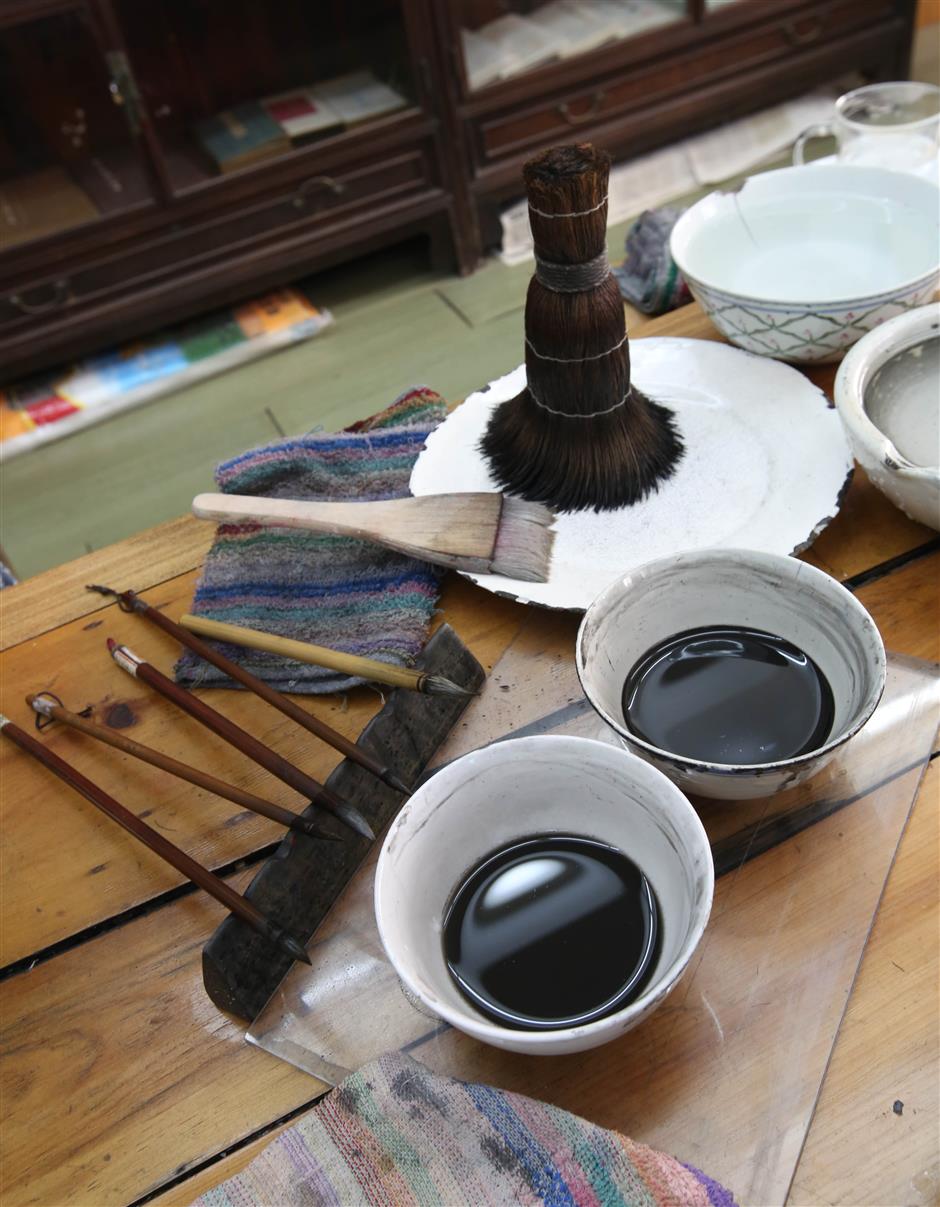
The brushes and ink used to outline
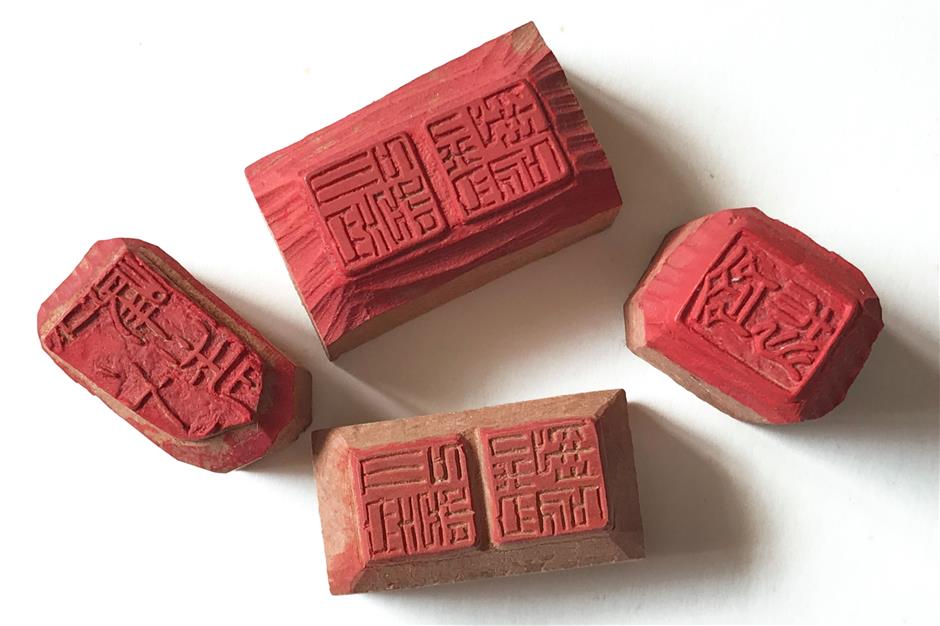

Q: What’s the attraction of this job?
A: The great sense of satisfaction once a piece of work is completed. The picture produced by the meticulous woodblock printing is just like an original ink-wash painting, with subtle brushstroke, texture and hues.
Q: Do you think such craftsmanship will be fading in the future?
A: No, I don’t think so, because there will always be a small group of people who would appreciate this.
Q: Do you have apprentices to pass down your skills?
A: Yes, I have seven students now, some of whom are really good. They all graduated from the print departments of art academies. I have confidence in them, and they are the future.
Q: What do you think makes you excel in this area?
A: Patience, plus a pair of swift hands. I am quite good at hand labor. Believe it or not, I am good at knitting and making clothes.
Q: You appear much younger than your age. What’s the secret to retain your vitality?
A: I have no secret, maybe because the room is always filled with proper humidity, or I always keep a balanced mood.
Q: When do you plan to totally retire from this job?
A: Perhaps in two years. Frankly speaking, I treasure this space so much and cherish the friendship of this team.

A scroll based on “Saints Celebrating Their Birth,” a masterpiece by Ren Bonian (1840-96), was showcased at World Expo Shanghai 2010.

















